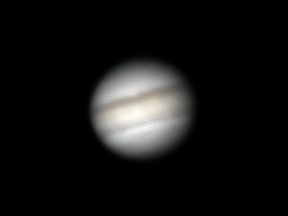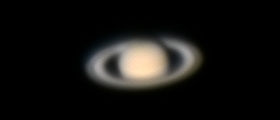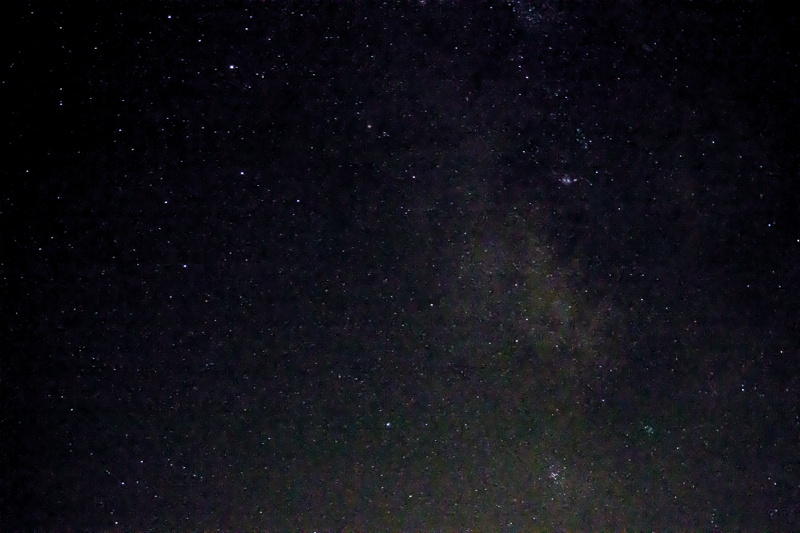Jupiter, Saturn, Teapot
Posted: 21 September 2019
|
Open: Friday, 20 September 2019, 1815 MST Temperature: 91°F |
Session: 1384 Conditions: Mostly clear, breezy |
Equipment Used:
12" f/8 LX600 w/StarLock
2" 24mm UWA eyepiece
1.25" 3X TeleXtender
Atmospheric Dispersion Corrector
Camera:
D850 DSLR
1822 MST: LX600 ON, StarLock OFF, High Precision OFF.
1826 MST: sunset.
1831 MST: located Venus in the 7x50 finderscope. Centered and viewed Venus, 102X. It was essentially a small fully illuminated disk very low in the western sky. I did not try using the Atmospheric Dispersion Corrector as Venus was about to disappear behind a tree.
1835 MST: began looking for Mercury in the 7x50 finderscope. 1850 MST: gave up searching for Mercury as it would now have been behind a tree.
Viewed Jupiter and four moons, 102X. Seeing was not very good.
Mounted the D850 DSLR at prime focus + 3X TeleXtender + Atmospheric Dispersion Corrector (ADC). Did 1 minute long video recordings of Jupiter and Saturn, 1080p, 24fps, 5X slo-mo, using various exposures. Although seeing was not very good, the images can out fairly well.
Jupiter, stack of 5862 frames, 1/200sec, ISO 2500

Saturn, stack of 5307 frames, 1/125sec, ISO 6400

1924 MST: removed the camera, TeleXtender, and ADC. Viewed Saturn and four moons, 102X.
1930 MST: the breezes were calmer now but still occasionally strong.
1933 MST: High Precision ON.
Slewed to NGC7305 (galaxy) to check on StarLock autoguiding seeing conditions.
1935 MST: StarLock ON.
Autoguiding was erratic due to the poor seeing.
1937 MST: StarLock OFF, High Precision OFF.
I decided to try handheld imaging of the Sagittarius "Teapot", Saturn, and the Milky Way using the D850. Although somewhat "noisy", this image (f/5.6, 1/2sec, ISO 102400, White Balance 4550K, focal length 70mm) shows all three.

Mouseover or tap on image for labels
At this point I ended the session due to the poor seeing and the fact that I would have a long day and night at Oracle State Park (our local IDA "International Dark Sky Park") the next day. I am giving a talk on the potential for Oracle to become an IDA "International Dark Sky Community". There will be a star party at the Park following my talk.
1952 MST: LX600 OFF.
|
Close: Friday, 20 September 2019, 2005 MST Temperature: 76°F |
Session Length: 1h 50m Conditions: Mostly clear |
Comments are welcome using Email. Twitter users can use the button below to tweet this report to their followers. Thanks.
Cassiopeia Observatory Home Page
Copyright ©2019 Michael L. Weasner / mweasner@me.com
URL = http://www.weasner.com/co/Reports/2019/09/21/index.html
